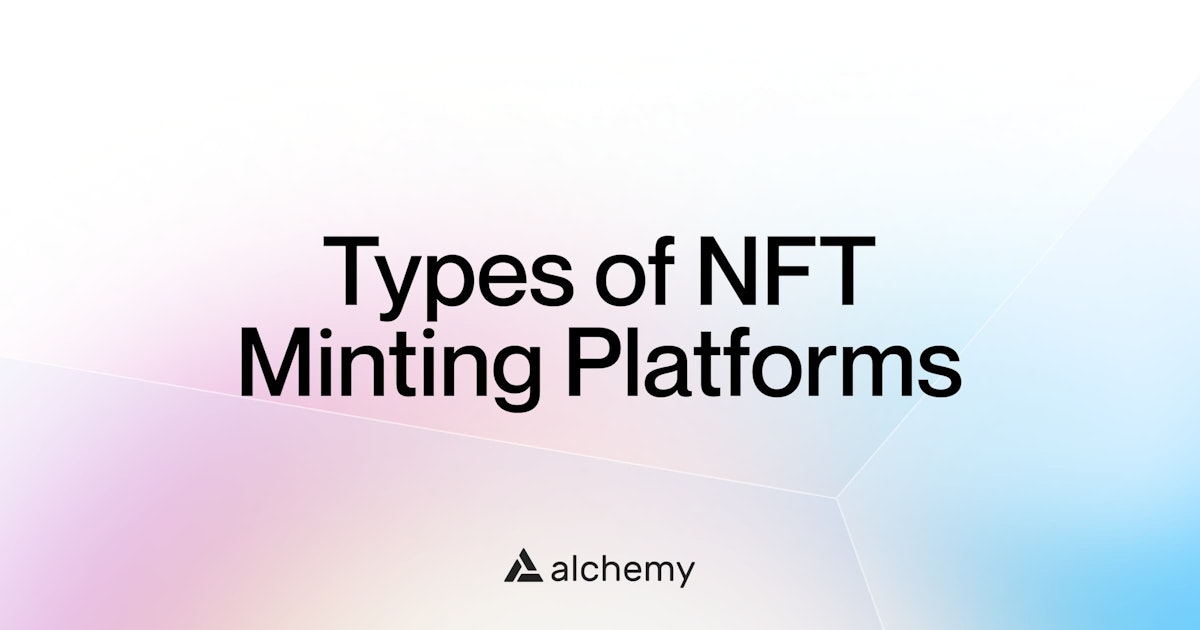Published on 2023-03-154 min read
When it comes to minting an NFT collection in 2023 you have a lot of options. Whether you are minting for the purpose of art, utility, community or something else, you should carefully choose a minting platform that meets your NFT project’s long-term goals because it can be difficult to change your decision.
There are many technical considerations when selecting an NFT minting tool. For example, if a platform uses a shared smart contract, it may be difficult, or even impossible, to distinguish who made those NFTs on a different platform.
NFT developers should also make note of the blockchain they are choosing. Migrating to a new blockchain in most cases means scrapping your old NFTs entirely or creating a complex locking and unlocking mechanism to migrate NFTs to new blockchain.
By doing your research and making the right choices ahead of time you’ll save yourself a lot of trouble!
1. NFT Marketplaces with Minting Platforms
These marketplaces will get you the most exposure, however you are limited to minting a small number of NFTs.
If you are a 1/1 NFT artist launching a small collection, but not necessarily launching a community, choosing an NFT marketplaces integrated minting tools might be the best option.
If you want to launch a community with something like the Bored Ape Yacht Club there are likely better options for your use case below.
OpenSea
The largest and most popular NFT marketplace, OpenSea allows you to mint an NFT on their platform with an easy-to-use interface and a shared NFT smart contract.
If you don’t mint on OpenSea, you can still leverage the marketplace to sell your NFTs, even if they are minted elsewhere. Most of the top selling collections on OpenSea are not actually minted on OpenSea!
Rarible
Rarible is the second largest marketplace and also lets you buy and sell NFTs on Ethereum, Polygon and Solana. Rarible provides a few more minting options such as dedicated smart contract deployment and lazy minting through an API on a shared smart contract.
Because Rarible is a smaller marketplace, you may get more visibility here if you are an emerging artist minting a few pieces at a time. No matter where you mint, sales are going to come mostly through your own promotion. Just as with OpenSea, you’ll still be able to sell on Rarible even if you mint elsewhere.
Another couple alternatives to Rarible include Zora and Mintable.
2. Curated NFT Minting Websites
Curated NFT minting websites require artists to apply to get accepted on an exclusive platform. While private to a small subset of creators, curated NFT minting sites offer artists a great opportunity to showcase their work. If you are an established artist, this may be what you’re looking for.
SuperRare
A marketplace for digital art NFTs, SuperRare has a focus on supporting emerging and mid-career artists. It has a user-friendly interface and a large community of buyers and sellers. SuperRare also offers a number of tools and resources for artists to help them promote their work.
Foundation
Foundation is another curated NFT platform that prides itself on the quality of artists and partnerships offered to buyers. If you are an artist with a following in the real world or an accomplished digital artist this may be the community you’re looking for.
3. DIY NFT Minting Platforms
If you’re looking to create a large NFT collection (e.g. 10,000 generative NFTs) and start a community, your best option is to do it yourself. DIY NFT minting tools will enable you to create your own website, and leverage secondary NFT marketplaces like OpenSea and Rarible, after the initial sale.
thirdweb
Providing a variety of tools for minting custom collection drops, fungible tokens, marketplaces, and DAOs, thirdweb enables NFT creators with some coding experience to make your own minting website and manage your NFT collection by yourself.
NiftyKit
NiftyKit provides a variety of smart contracts you deploy from your own wallets similar to thirdweb, but with less coding. NiftyKit’s site makes it easier to manage your do-it-yourself minting website, drops, collections through a simple UI. You’ll still need to create your own drop site for users to mint.
4. Programmatic APIs for Minting NFTs
If you need to scale up your NFT operations you’ll need a solution to programmatically mint NFTs using software. You might need this option if you are starting your own NFT platform or have an established application.
Ownerfy
Started in 2017, Ownerfy is one of the most experienced NFT minters at scale, specializing in minting, transferring and deploying contracts from any number of wallets through a REST API. This allows traditional web2 apps to onboard their users without forcing them to leave the app to download external apps or plugins.
Tatum.io
Specializing in minting on a variety blockchains, Tatum gives devs the ability to deploy marketplaces and NFTs on-chain via an API. Tatum is suitable for brands and businesses who manage their NFT products programmatically and scale up operations. This is ideal for servicing a large number of native web3 communities.
5. Gaming NFT Minting Platforms
While you don’t need to join a specific gaming platform to use NFTs in your games, developers may benefit from specific gaming NFT tooling and partnerships.
Enjin
Specializing in minting in-game digital assets and having SDKs for popular game development engines including Unity and Unreal Engine, Enjin is one of the first and most resilient NFT minting platforms for web3 games. They have partnered with Microsoft and hundreds of smaller game developers to create a robust set of tools.
Flow
Dapper Labs was the company behind the original Ethereum NFT specification as well as some of the most notable projects in the space including Crypto Kitties and NBA Top Shots. They have since created their own blockchain, Flow, where the fees are much lower than Ethereum. The tradeoff is less compatibility with other tools.
